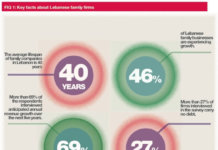Form follows function, structure follows strategy, and everything follows a purposeful leader. Such is the distilled wisdom from many years of managerial studies regarding successful organisational adaption to change. And, today, when change is unceasing and ubiquitous, it may just be that the last of these lessons – that of the “purposeful leader” – may prove to be an especially reliable innovation advantage for family-owned businesses. Management guru Gary Hamel recently wrote that the three “Core Incompetencies of the [modern, complex] Corporation” were their being “inertial, incremental. [and] insipid.” Part of the reason for this sorry state of affairs is the personal and emotional distance between “shareholder-wealth maximizing” professional management and the original reasons for an organisation’s establishment. Family businesses typically do not have to deal as starkly with such a situation as do publicly-held corporations. Bill Fischer is a Professor of Innovation Management at IMD Business School in Switzerland and describes six facts to bear in mind when business families face disruptive innovation.
If we consider the unfortunate demise of the once market-leading and formerly family-held Kodak, there is much that speaks to the idiosyncratic advantages and vulnerabilities of family-owned businesses when it comes to innovation. Let us consider six key facts that a family business should bear in mind when faced with disruptive innovation:
1. No surprise should really be a surprise
Disruptive innovation is neither fast nor surprising; yet, it is exceedingly difficult for incumbent leaders to adjust to: It took Kodak 37 years to finally fall victim to the digital revolution, a revolution that it had, itself, created with the advent of the first electronic photographic device in 1975. Also, neither Blackberry nor Nokia’s demise happened “overnight” but both were certainly very public; with all of us wondering what they were doing that they could not see it coming, nor respond in time. The same is probably true for the contemporary automobile and air-travel industries. We all see big change coming, but it is most likely that the incumbent market leaders will be slow to respond. The point is that disruptive innovation changes are typically signalled well before they unfold by a variety of role-players, often including frustrated consumers, who are trying to solve problems that the industry incumbents do not recognise, or are unwilling to acknowledge. In Kodak’s case, its positioning along the entire “imaging” value-chain: paper, hardware, film, processing and retailing put it into what should have been an excellent position to be intimately familiar with whatever was going on within the entire industry; but they failed to take advantage of their unique perspective. The family business, however, has a big advantage in becoming future-oriented because it tends to plan beyond on generation. If used smartly, such foresight can be applied to dealing with disruption in a timely fashion.
[ms-protect-content id=”4069, 4129″]
2. Losing the way
Organisations being disrupted often lose their way: I believe that what we see in the Kodak story illustrates one of the key pathologies of large complex organisations: The inability of leadership to be on-top of everything in a fast-moving world, and the role of fear in paralysing an organisation when it finally does perceive that its world is under attack. Kodak did not see the challenges arising that it would eventually be required to respond to; it did not understand the new value proposition evolving among the end-users of its products; and on top of all this it was shocked by the speed of desertion amongst its customer base. Consider, as well, the unfamiliarity of such recent innovators like Airbnb and Uber and the way they attack traditional industries like transportation and hospitality. It is hard to respond to such change in a thoughtful and coherent fashion, in fact, at first glance it is hard to take such “non-traditional” challenges seriously; and it is also hard not to be afraid of how things will play out. In the case of Kodak, fear constrained those closest to the action from alerting those in a position to move the organisation in different directions. It led to incomplete and unfulfilled communications that resulted in the organisation falling deeper into trouble before it was clearly recognised.
3. Conflict of interests
Personal interests of key stakeholders often conflict with the strategic interests of the firm: Sometimes at the precise moment when clear and long-term thinking is most needed, it is much more attractive to extract one more pound of flesh from today’s business than to risk it for an uncertain tomorrow, To shift profit models requires governance courage. In family businesses, there may even be more at stake in terms of potential loss. Business as usual may be over, but what does that mean for the family? Beyond the legacy, the concentration of family wealth in a business and the placement of family members in a business are all reasons why the stakes of disruption can be even higher with family-owned businesses than with their publicly-held counterparts.
Consider for a moment the poignant withdrawal of the Graham family from The Washington Post, as new owner, and Amazon founder, Jeff Bezos took over the paper and eventually installed his own team. Changing expectations regarding succession, family obligations and participation in something that holds the family together well-after the founder has passed on are all emotional as well as financial aspects of being disrupted.
4. Even partial substitution hurts
Firms are not disrupted, industries are, and the disruption does not have to be one hundred per cent to hurt. Most substitutions of products, services, and technologies are partial, at least at first, but they hurt enough to inflict serious damage on the rest of the organisation’s activities.
Benchmarking your performance against your incumbent peers is an excellent way to set an entire industry up for a big, and bad surprise, all at the same time. We speak so often about Kodak and Nokia, without remembering that Agfa and Fuji, and Motorola and Sony-Ericsson, also failed in film and handsets at about the same time. In most mature industries, the leading firms are all doing pretty much the same things, in the same way, with the same sort of people. As a result, truly different ideas are scarce and price-centric competition dominates, which almost inevitably blinds everyone to any innovative alternative. Since price competition is a full-time job in itself, it is unlikely that any of the incumbent leaders in an industry will be looking outside for big departures from the existing status-quo. Benchmarking against such peers only raises the likelihood that all will be disrupted at the same time.
Kodak, was not a company that was stingy on research, yet as market-share slipped and revenues fell, they eventually had to give things up, and the question then became: “give up the uncertain future or the successful past?” All too often, we discover that substitution is really death by a thousand-cuts, rather than one quick and final decapitation. And, keeping on top of all of these little surprises can bleed the energy out of top managements’ attention budget, to the point where the ship is perceived as being “rudderless.”

5. Past success inhibits
Past success is the biggest inhibitor of future success: Being a successful incumbent in the prior generation of offerings is typically the most telling predictor of future failure in the next. If a company makes all the right choices to evolve from being a creator of a new idea into a high-volume producer of a mass-consumed product, then the obligation to pursue efficiency overcomes any passion for novelty and effectiveness, and the organisation becomes protective of the basis for its present success. It is this fear of cannibalising existing streams of cash-flow that leads to denial and hesitancy when the early signs of disruption first appear. A family business might be even slower to react because of its emotional attachment to its activities which it tends to pursue even if financial rewards are not sufficient.
6. Leadership required
Visionary leadership is key to moving an organisation forward in the face of disruption: From its founding, Kodak was a purpose-driven organisation, and that purpose was George Eastman’s founding belief in the importance of simplifying photography. Eastman’s success was never as easy as it seemed, nor entirely straight-forward, but he was clearly successful enough to not only dominate the amateur and professional market segments of the photography business, with hardware, film and paper, but to also democratise image-taking to the extent that we might indeed give him credit for creating much of modern memories, as well. Eastman was not a natural leader, but he was a visionary and that vision continued to drive progress at Kodak until he thought that he had accomplished all that he had set out to achieve. While we can only speculate on what he might have done in the face of the growing digitalisation of images, but had it happened on his watch, there is considerable reason to believe that he would have drawn different conclusions and made different managerial choices than did those who came after him in Kodak’s leadership. Of course, this is all speculation, but at the moment of disruptive challenge from digital imaging what Kodak needed from its leadership was a continuity of purpose that legitimised risk-taking, and that is exactly what it did not receive. It might be a cliché, but leaders closer to the origins of an organisation are often much more sensitive to the customers’ needs that the organisation was created to serve than are their successors, who are often much more attuned to maximizing the financial performance of that same organisation.
This may be the ultimate advantage of the family-led business. Founder-owners, who were “present at the beginning,” understood what the customer really wanted and were able to craft a value-proposition to deliver on this. Is it really any surprise that Wahaha’s founder Zong Qinghou has been so adept in competing against the onslaught of much larger foreign invaders into China’s soft-drink beverage market? He was there, at the beginning of this industry, and understands intellectually and emotionally what the customer wants, and what wins in the market place. On a recent trip to China, I spoke with observers of the innovation scene there who expressed admiration for the role that such purposeful-leadership has had in inspiring innovation across a wide-range of Chinese companies. In nearly every case that they used for an illustration, there was an owner-founder who understood the customer better than anyone else and who could be counted on to catalyse innovation in the pursuit of customer needs. Keeping faithful to an interest in the consumer’s needs that such individuals exemplify is a major advantage that professional managers who see their jobs as “merely running a business” can ever hope to match.
Tharawat Magazine, Issue 24, 2014
[/ms-protect-content]














